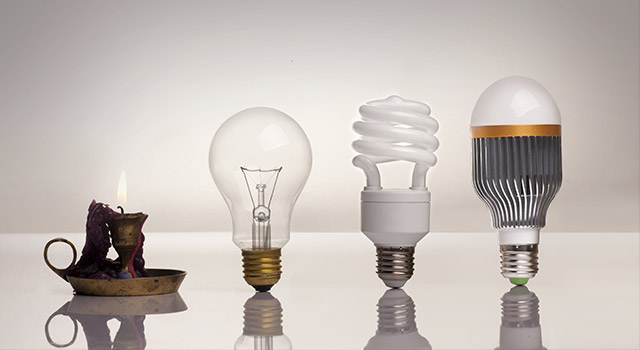
The incandescent light bulb was birthed more than 200 years ago, when the first experiment saw chemist and inventor Humphry Davy pass electrical current through a thin strip of platinum. Seventy-five years later, Thomas Edison perfected the design for the light bulb and it became the viable lighting solution that we know today.
But light bulbs are inefficient. They use a lot of electricity, they produce heat, and they are still relatively fragile in terms of design and lifespan.
In contrast, light-emitting diodes (LEDs) have only been available since the early 1960s, when the first commercial product, the Texas Instruments SNX-100 infrared LED, was introduced. It was invented by Bob Biard and Gary Pittman and it is the same type of LED still used in infrared remote controls today.
It’s not just LEDs’ energy efficiency that make them so intriguing. Unlike incandescent lighting, LED is a digital technology that can do much more than simply light up a dark room.
Take the Philips Hue, for example. This wirelessly controlled lighting system can display 16m colours and can be controlled via a smartphone application, allowing users to select a display colour, or set it to change according to any number of parameters people can configure.
Those with a little technical savvy can even incorporate the popular IFTTT — If This Then That — protocol that allows one to set actions based on various conditions. For example, someone could set a rule that the LED light mimics the colours of the sunrise when their smartphone alarm is sounded.
Although they’ve been around for decades, LEDs have not, until recently, been able to provide the same light output of traditional 60W or 100W light bulbs. But in recent years, LED replacements have become available for almost any lighting requirement, even outdoor floodlighting.
A 100W light bulb produces around 1 600 lumens of light, while the equivalent LED consumes just 16W to 20W of electricity.
But replacing old light bulbs with new LED equivalents can be a costly exercise — at least for now.

An LED light meant to replace a traditional 60W light bulb can fetch anywhere between R200 and R400, depending on the quality. There are cheaper alternatives available, but these often don’t adhere to the same quality standards as more expensive products.
“South Africa may be lagging Europe and the US, but globally the market share for LEDs is growing fast,” says product manager for indoor lighting and large-scale projects at Philips Lighting Africa, Henk Rotman.
“While the technology for traditional lamps is mature, within the LED space there are huge differences in quality, specification and price.”
Consumers should measure the return on investment (ROI) of LEDs against incandescent and compact fluorescent bulbs when weighing up a purchasing decision, says Rotman.
The ROI for compact fluorescent bulbs against incandescent alternatives is currently about two months. For LEDs, the payback period is about two years. “However, we expect the payback time for LED lights to come down dramatically as the lamps become more efficient and as prices go down and electricity tariffs go up.”
It would also seem that the incandescent light bulb is doomed, regardless. In 2011, the South African government said it would be the first African nation to adopt a comprehensive policy to phase-out inefficient lighting.
The policy is linked to a global initiative aimed at helping combat climate change through a shift to energy-efficient lighting.
The initiative is called en.lighten and the idea is to halve the greenhouse gas emissions that lighting accounts for globally. The aim is to achieving a global phasing out of inefficient lighting by 2016.
Whether it’s through legislation, or through mass manufacturing of LEDs, Edison’s light bulb will soon be consigned to the scrap heap. It had a very good innings. — © 2014 NewsCentral Media

